April 1968. With the end-of-the-decade deadline set by President John F. Kennedy during his May 25, 1961, address to Congress of landing a man on the Moon and returning him safely to the Earth, fast approaching, senior NASA managers needed to make bold decisions.
April 1968. With the end-of-the-decade deadline set by President John F. Kennedy during his May 25, 1961, address to Congress of landing a man on the Moon and returning him safely to the Earth, fast approaching, senior NASA managers needed to make bold decisions. With the agency well on the road to recovering from the Apollo 1 fire more than a year earlier, many challenges remained. The baseline plan released in November 1967 pointed to a Moon landing by late 1969 but with many flights beforehand. Significant issues on any of those missions could put the lunar landing goal in jeopardy. Early successes led to confidence that some flights in the plan could be omitted, increasing the possibility of a Moon landing by the deadline.
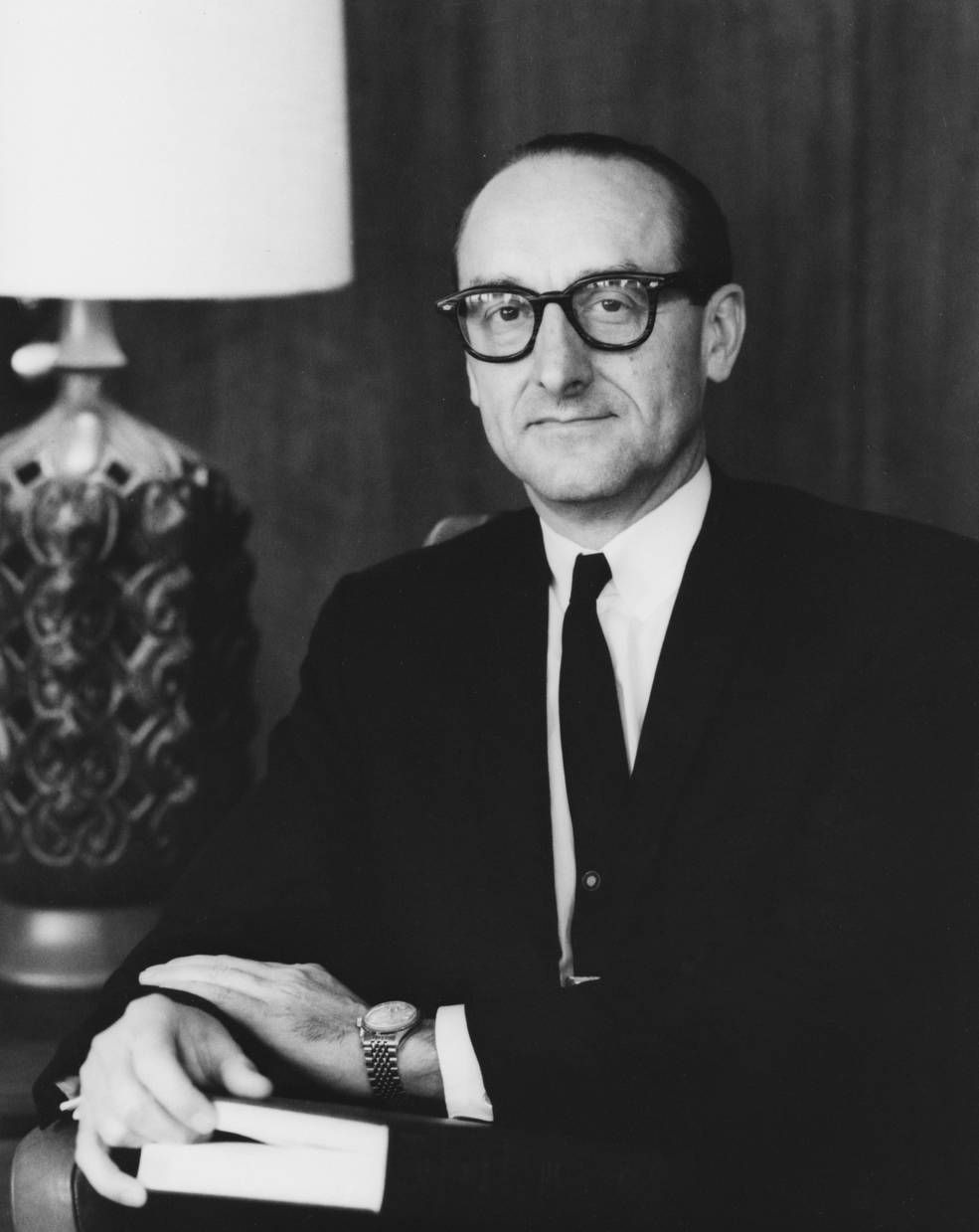
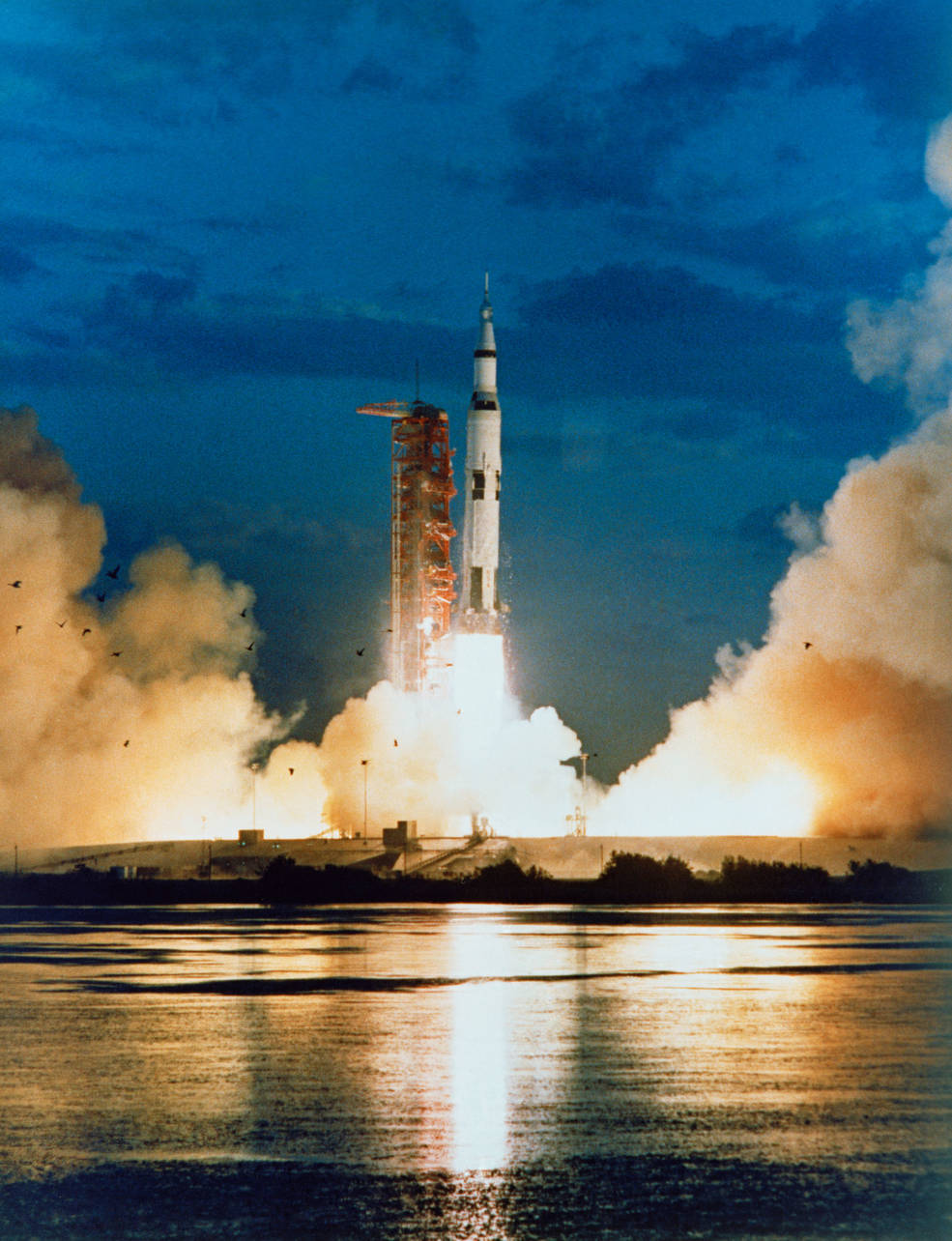
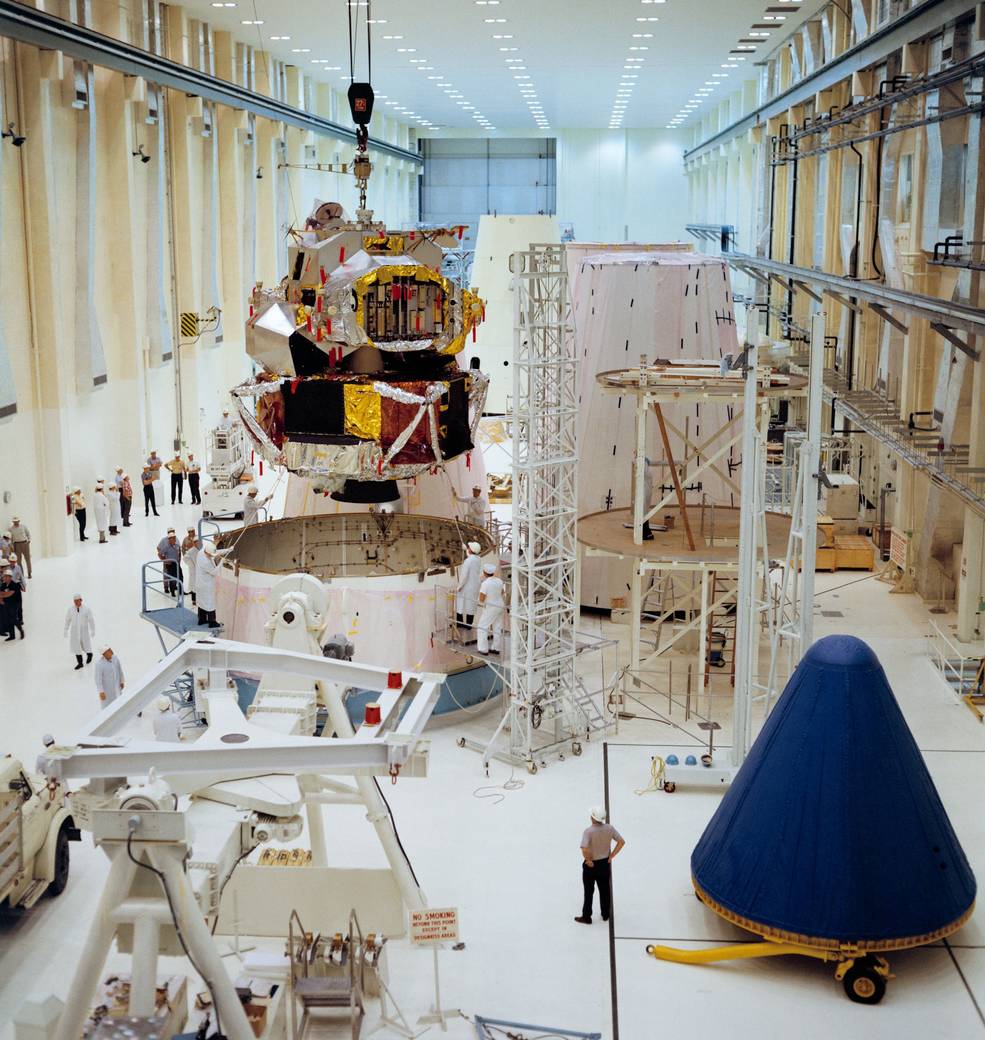
Left: NASA Associate Administrator for Manned Space Flight George E. Mueller. Middle: Launch of Apollo 4, the first flight of the Saturn V Moon rocket. Right: Engineers prepare the first Lunar Module for its flight on Apollo 5.
On Nov. 4, 1967, just five days before the Apollo 4 mission, NASA’s Associate Administrator for Manned Space Flight George E. Mueller released a plan for upcoming Apollo missions in 1968 and 1969. The plan called for a combination of uncrewed test flights and crewed missions on both Saturn IB and Saturn V rockets, to thoroughly test the Apollo Command and Service Modules (CSM) and the Lunar Module (LM), leading to a human landing on the Moon by the end of 1969. The six flights planned for 1968 consisted of:
- AS-204/Apollo 5 – first uncrewed test of the LM in earth orbit
- SA-502/Apollo 6 – second uncrewed flight test of the Saturn V and CSM
- SA-503 – third uncrewed test of the Saturn V carrying a boilerplate CSM
- AS-206 – second uncrewed flight test of the LM in earth orbit
- AS-205 – first crewed Apollo flight, a 10-day Earth orbital mission to qualify the CSM
- SA-504 – first crewed flight of the Saturn V, the first crewed operation in space with both the CSM and LM, including rendezvous and docking and crew transfer between the two spacecraft
The five flights planned for 1969 involved crewed Saturn V missions (SA-505 to SA-509), with the first four as lunar mission development flights or lunar mission simulations. SA-509, or possibly a subsequent flight, would attempt a lunar landing. A significant delay or malfunction on any of these flights would set the schedule back and jeopardize meeting President Kennedy’s goal. The success of Apollo 4 (SA-501) just five days after the release of the long-term plan boosted NASA’s confidence, but much work remained, with the first crewed Apollo mission still months away. The success of the first uncrewed LM test in space on Apollo 5 (AS-204) in January 1968 provided enough confidence in its systems that two months later NASA managers decided to cancel the second uncrewed test flight (AS-206), reducing the number of missions leading to the lunar landing. However, concerns remained because of delays in the manufacture and testing of subsequent LMs. The second uncrewed test of the Saturn V rocket on the Apollo 6 (SA-502) mission in April did not go entirely as planned, with the first stage experiencing significant vibrations known as pogo, two of the second stage’s five engines shutting down early, and the third stage’s single engine failing to restart to send the CSM onto a simulated lunar trajectory. An alternate mission plan using the Apollo spacecraft’s Service Module engine salvaged many of the mission’s objectives, but concerns remained over the rocket’s issues. In addition, during powered ascent, the panels on the Spacecraft LM Adapter (SLA) suffered superficial damage but with no loss of structural integrity.
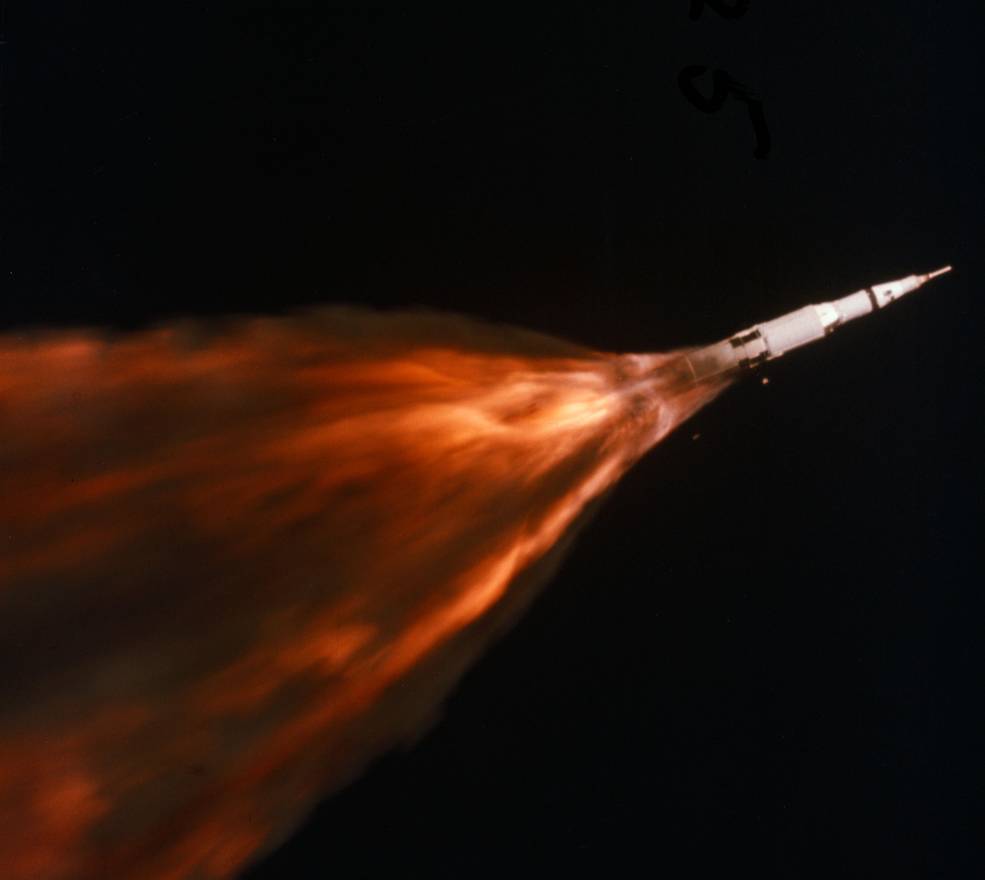
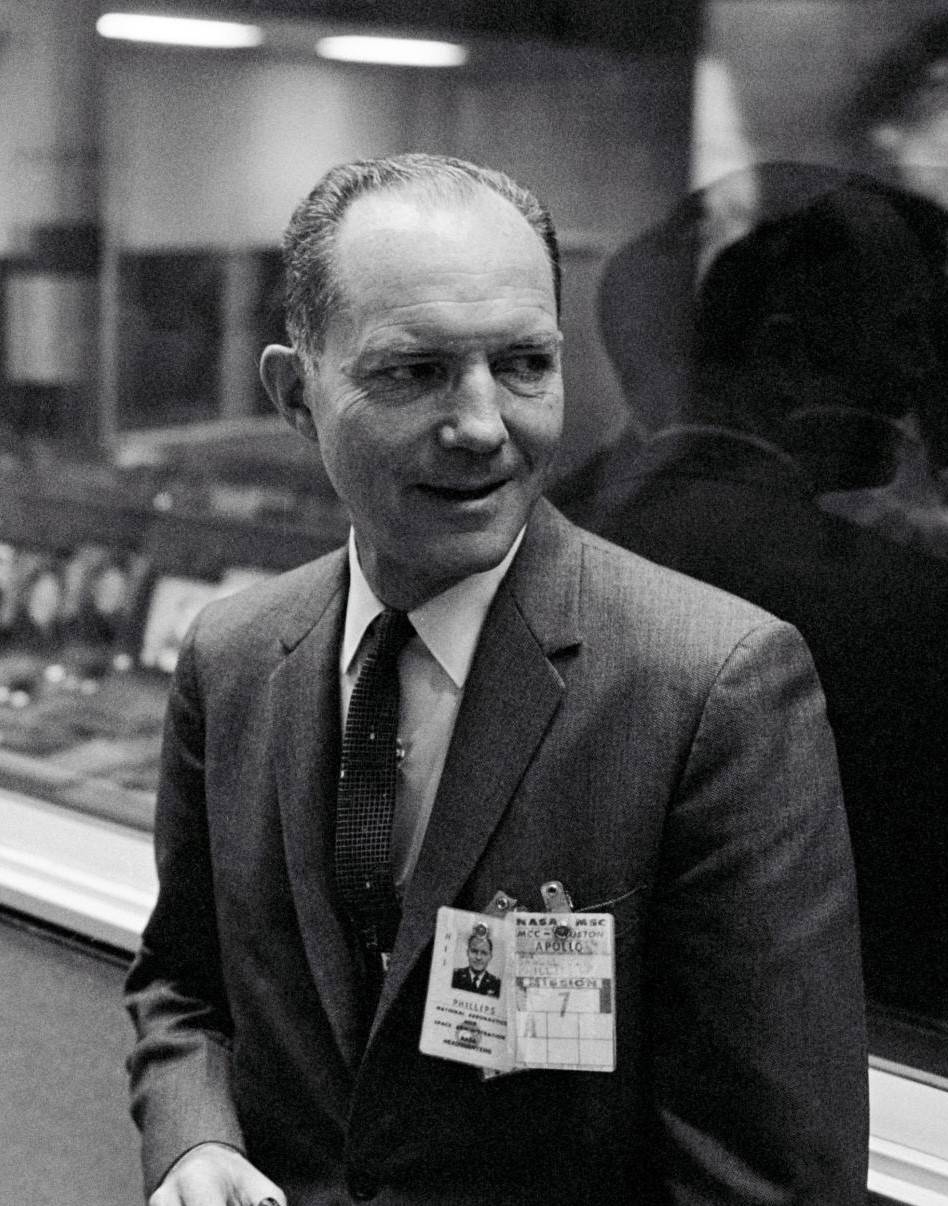
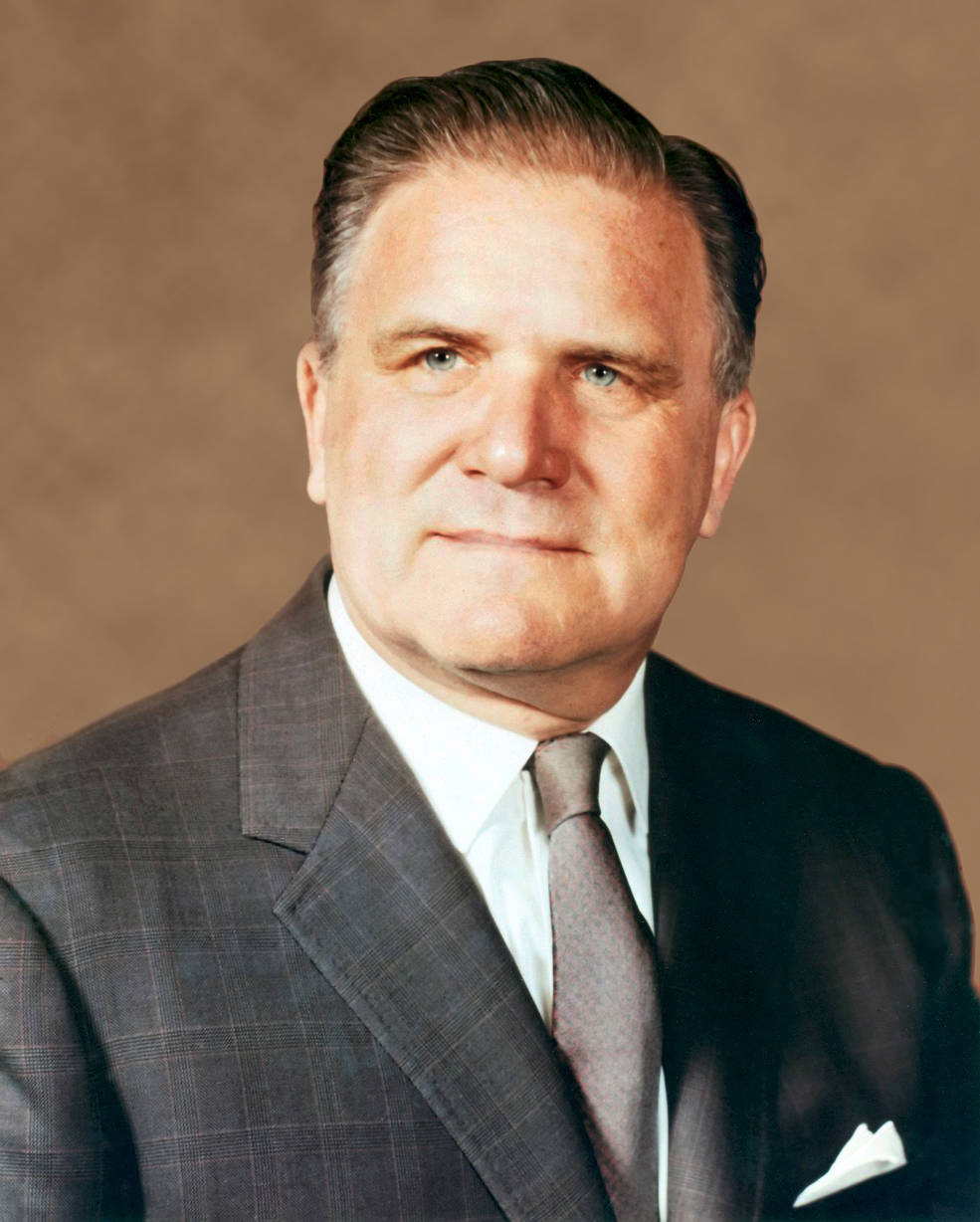
Left: Powered flight of Apollo 6 on April 4, 1968, showing visible damage to the Spacecraft Lunar Module Adapter’s external panels. Middle: Apollo Program Director Samuel C. Phillips. Right: NASA Administrator James E. Webb.
Despite the problems encountered with the Saturn V during Apollo 6 (SA-502), on Apr. 24, Apollo Program Director Samuel C. Phillips recommended to fly the third Saturn V (SA-503) with a crew, instead of a third uncrewed test flight as in the November 1967 plan. Phillips believed engineers had a solid understanding of the causes of the problems that plagued Apollo 6 and that they could fix them in time to support the mission in late 1968 or early 1969, depending on the readiness of the LM. Three days later, NASA Administrator James E. Webb approved Phillips’ plan to fly the third Saturn V with a crew on a mission to test the CSM and LM in low Earth orbit. The decision included the caveat that if engineers could not resolve the Saturn V’s issues in time, the mission would revert to an uncrewed flight, using boilerplate spacecraft BP-30 instead of an operational CSM/LM combination.
The pogo effect seen on Apollo 6 was not unique to the Saturn V as earlier launch vehicles had similar experiences. Pogo occurred when a partial vacuum in the fuel and oxidizer feed lines reached the engine firing chamber causing the engine to skip. These oscillations then travelled up the axis of the launch vehicle resulting in intense vibration in the CSM, causing discomfort and possibly injury to an onboard crew. While arguing that a crew likely would have survived the flight aboard Apollo 6, Marshall Space Flight Center Director and designer of the Saturn V Wernher von Braun conceded that the “flight clearly left a lot to be desired. With three engines out, we just cannot go to the Moon.” Once NASA decided to place a crew on SA-503, solving the pogo issue took on critical importance. A recurrence of pogo with a crew aboard could lead to injured astronauts or an aborted mission.
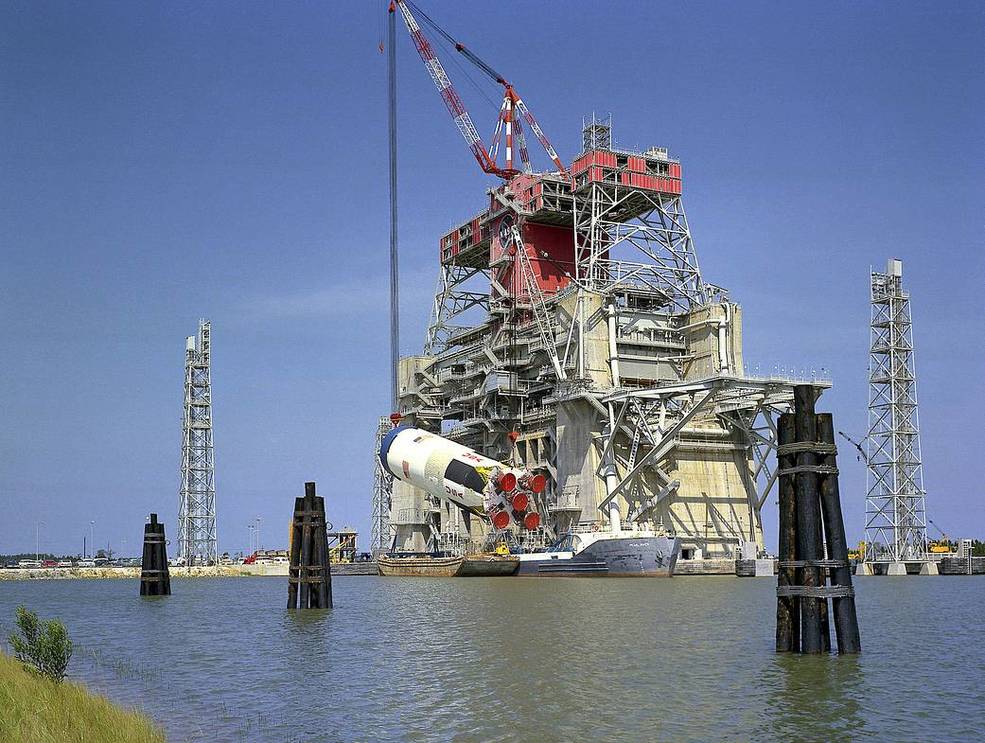
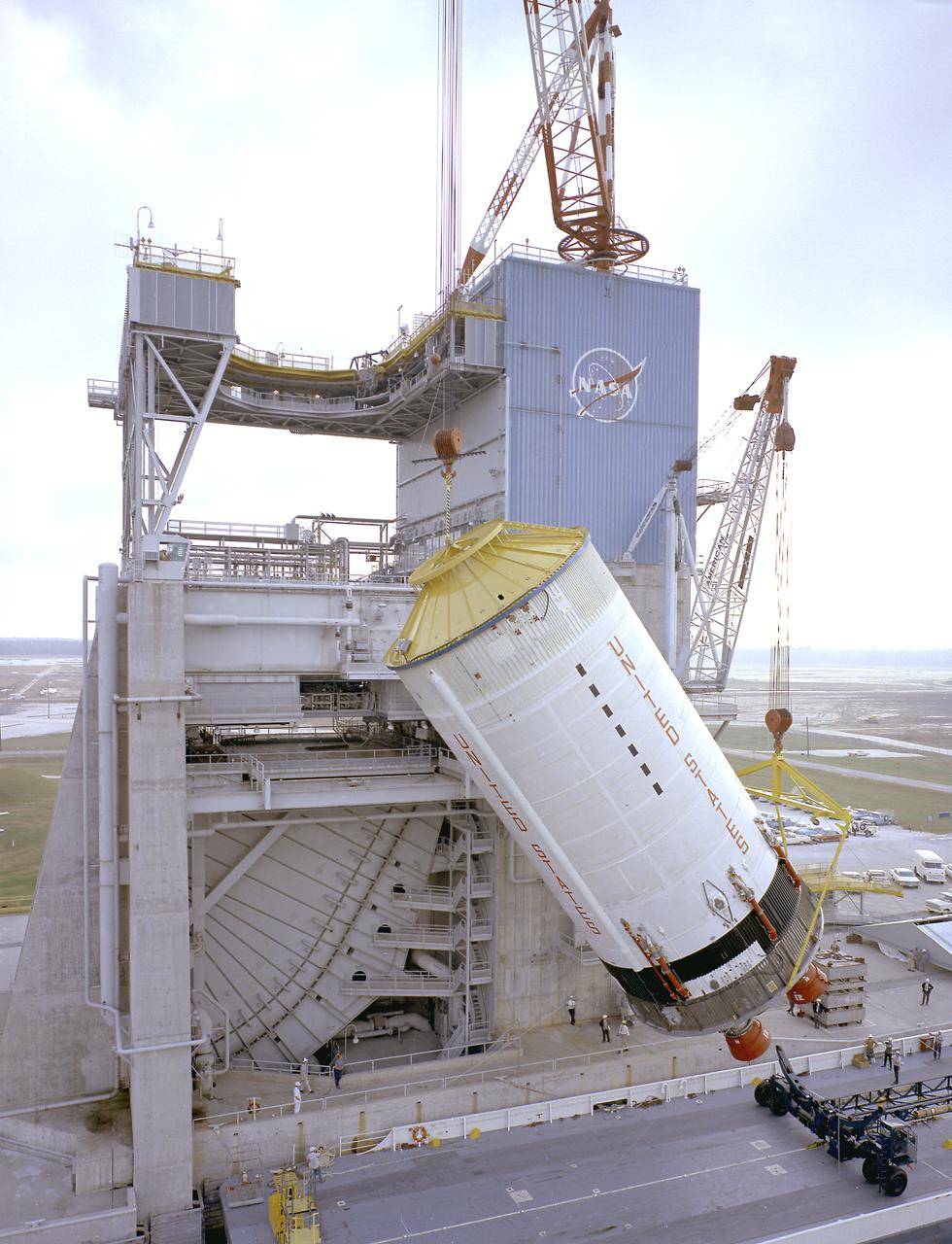
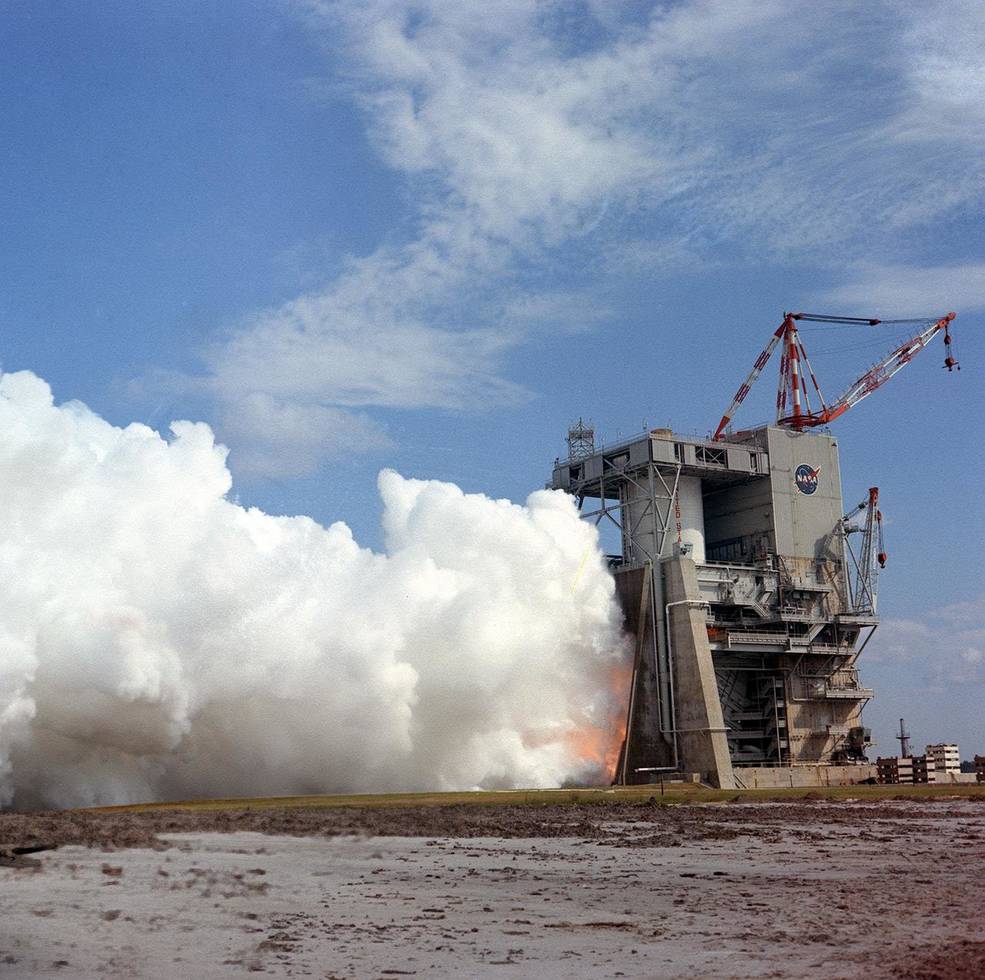 Left: Workers lift a Saturn V S-IC first stage into a test stand at the Mississippi Test
Left: Workers lift a Saturn V S-IC first stage into a test stand at the Mississippi Test
Facility (MTF), now NASA’s Stennis Space Center, for static firings. Middle: Workers lift
a Saturn V S-II second stage into a test stand at MTF. Right: A static test firing
of a Saturn V second stage at MTF.
NASA formed a Pogo Working Group comprised of more than 1,000 government and industry engineers to find a solution verifiable through ground testing. The Working Group’s rigorous investigation determined the key to mitigating the pogo effect included ensuring that the five F-1 were tuned to slightly different frequencies – the group determined that two of Apollo 6’s F-1 engines had been inadvertently tuned to the same frequency, magnifying the pogo effect. In addition, filling the charged prevalve cavities on the liquid oxygen feed lines with helium gas from the tank pressurization system effectively worked as a shock absorber preventing any oscillations from traveling up and down fuel and oxidizer feed lines. Through a series of tests, engineers verified mathematical models they developed based on data from previous flights, while static test firings of first stages for upcoming missions with pogo suppression hardware installed verified the solution. On July 15, 1968, Apollo Program Director Phillips concurred with the group’s solution.
The failures of the J-2 engines on the second and third stages presented more of a challenge. Early on, the team investigating the failure discovered a leak of liquid hydrogen gas at 70 seconds into the burning of the second stage in engine number 2. This leak in the bellows section of the Augmented Spark Ignitor (ASI) fuel line started as a small leak in a defect that eventually resulted in a catastrophic failure. The investigation determined that unfortunately, the failure of engine number 2 was compounded when, as combustion pressure began to fall, sensing equipment triggered the shutdown of a different engine, number 3, due to incorrect wiring. The restart failure of the J-2 engine in the third stage resulted from the same defect in the ASI. Analysis revealed that redesign of the fuel lines would solve this problem. In August 1968, engineers at MTF conducted static test firings on a first stage with the pogo suppression system installed and on a second stage with redesigned fuel lines for the J-2 engines. The success of these tests gave NASA the confidence to continue plans for a crewed SA-503 mission. Engineers identified the cause of the SLA panel debonding as due to moisture buildup in the honeycomb structure that expanded due to aerodynamic heating and causing seams to fail and the material to blow off. Drilling holes in subsequent SLAs to relieve any pressure buildup solved the problem.
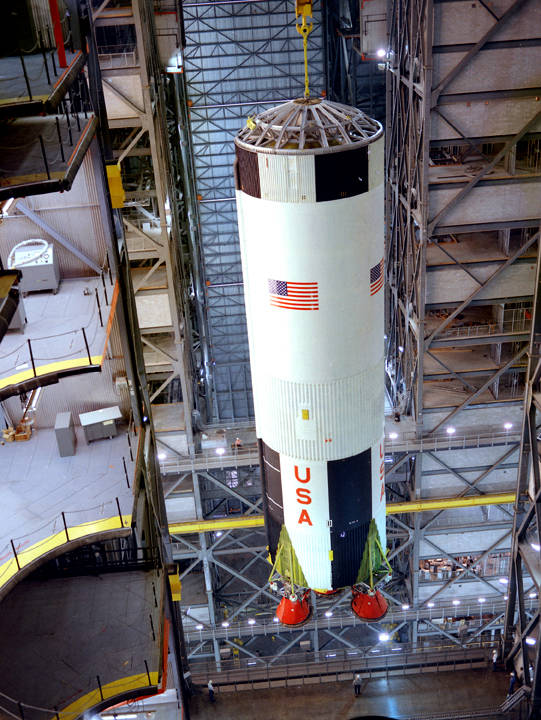
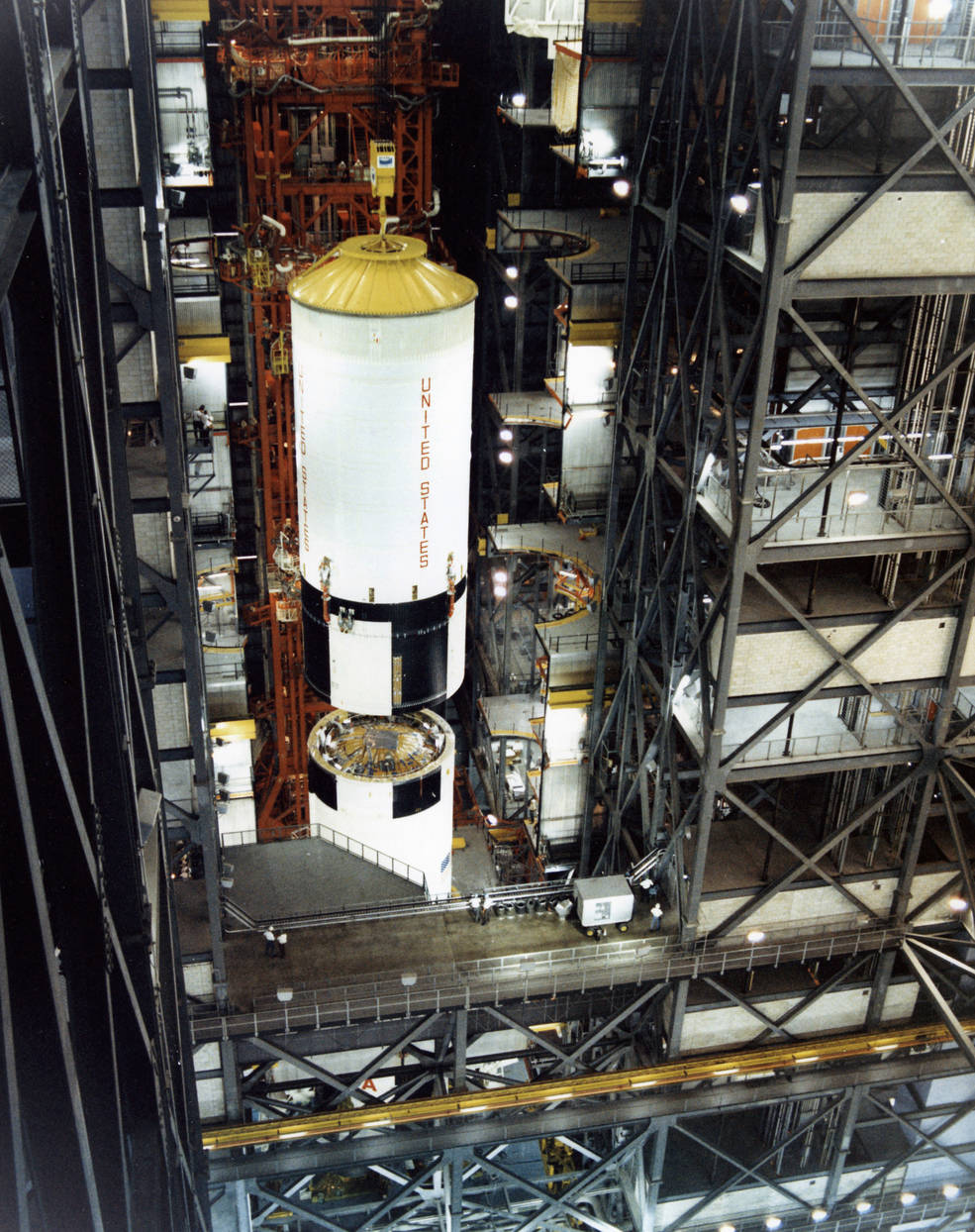
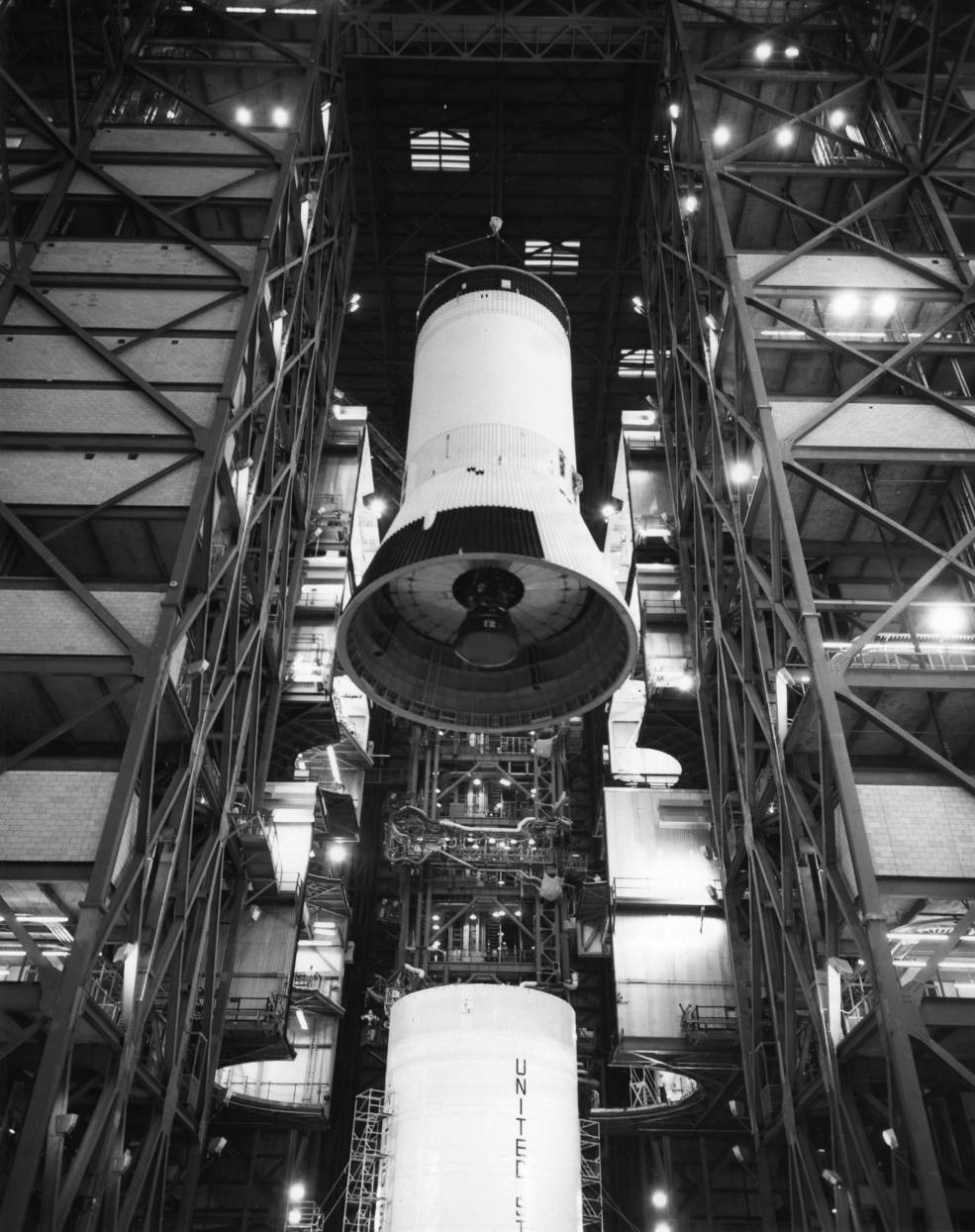
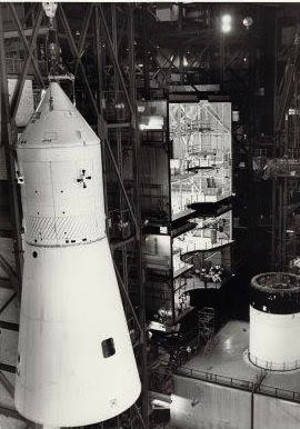
SA-503 stacking operations in the Vehicle Assembly Building at NASA’s Kennedy Space Center in Florida. Left: Workers lower the S-IC first stage onto the Mobile Launcher on Dec. 30, 1967. Middle left: On July 24, 1968, workers restack the S-II second stage following its return from the Mississippi Test Facility, now NASA’s Stennis Space Center. Middle right: Workers stack the S-IVB third stage on Aug. 14, 1968. Right: The Boilerplate BP-30 spacecraft, the payload for an uncrewed SA-503 mission.
Because workers in the Vehicle Assembly Building at NASA’s Kennedy Space Center in Florida had already assembled the SA-503 Saturn V vehicle, on April 29 they de-stacked the stages so the S-II second stage could be returned to MTF for detailed inspections, modifications, and additional testing to human rate the stage. The certified S-II stage returned to KSC on June 27 and workers restacked it on July 24.
In August 1968, NASA managers made a bold proposal that dramatically changed the SA-503 mission, by then designated as Apollo 8, and brought the Moon landing closer.
To be continued…























